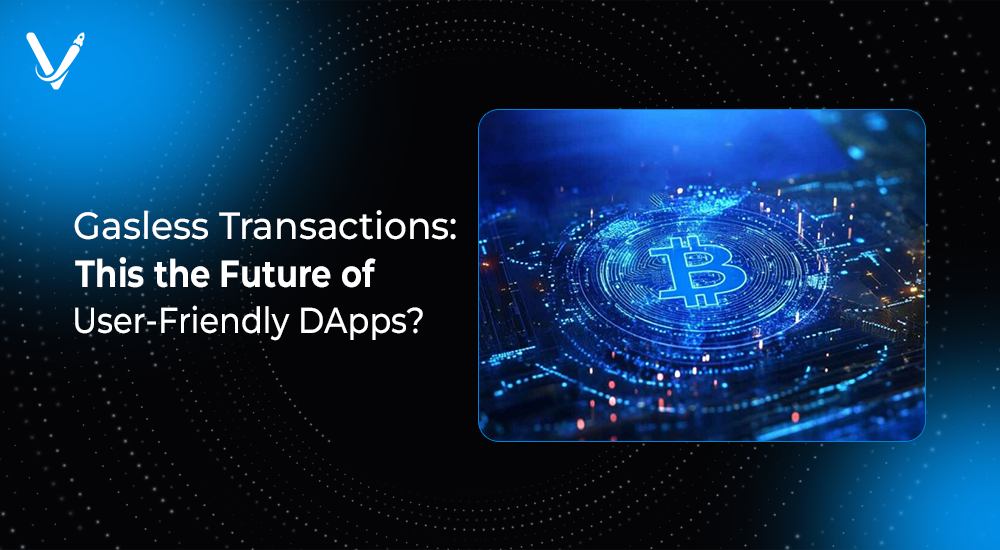Gasless Transactions: Is This the Future of User-Friendly DApps?


- Sep 1, 2025



Every time someone tries to use a decentralized application (dApp), one question looms large: how much will the gas fee be this time? For many newcomers, that first encounter with fluctuating gas costs becomes a roadblock instead of an invitation. Developers build powerful blockchain products with endless possibilities, but the simple act of paying a small fee can alienate millions of potential users. This is where gasless transactions step in as a game-changing innovation.
By removing the need for end users to directly pay gas fees, gasless transactions promise a future where interacting with blockchain applications feels as smooth as browsing the web or using a mobile app. Imagine logging into a DeFi platform, swapping tokens, or minting an NFT without ever worrying about ETH or MATIC in your wallet. That’s the dream behind this concept.
This article explores how gasless transactions work, the mechanics behind them, the benefits they bring to users and developers, their limitations, and how they might influence the evolution of user-friendly dApps. We’ll also look at real-world use cases, infrastructure providers making this possible, and predictions for what lies ahead in the Web3 ecosystem.
Before diving into gasless models, it’s important to revisit why gas fees exist in the first place. Without understanding the foundation, it’s hard to see why removing them is such a big step forward for usability.
Gas is the fee paid to incentivize miners or validators to process transactions and secure the network. It prevents spam, prioritizes transactions, and ensures the decentralized machinery runs smoothly. On Ethereum, for example, users pay in ETH to cover the computational cost of their transactions.
Without gas, malicious actors could overload networks with infinite transactions, destabilizing them. Gas is the balancing mechanism that ensures every transaction comes with a cost proportional to the resources consumed.
For developers and seasoned crypto enthusiasts, gas fees are an accepted trade-off. For mainstream users, however, gas fees are confusing, volatile, and frustrating. Paying $30 in ETH just to move tokens worth $50 doesn’t make sense to an average user. This mismatch between blockchain’s promise and actual usability has long been a barrier to adoption.
This is where gasless transactions transform the experience.
Gasless transactions remove the need for the end user to pay network fees directly. Instead, another entity — often the application developer, a relayer service, or a sponsor — covers the gas costs on behalf of the user.
Think of it like using a website that lets you browse without ever worrying about server costs. The website owner covers infrastructure expenses while you enjoy a seamless experience. In blockchain terms, gasless transactions make Web3 interactions feel as intuitive as Web2 applications.
The most common way gasless systems work is through meta-transactions. In this model, the user signs a message with their private key, authorizing the action. This signed message is then submitted to a relayer or a specialized smart contract that pays the required gas fee and executes the transaction on-chain.
The result: the user never touches ETH or another native token to interact.
Understanding how gasless transactions work helps demystify what’s happening behind the scenes. Even though users don’t see gas fees, the blockchain still requires them — they’re simply handled in a different way.
The appeal of gasless transactions lies in the fact that they create a better experience for everyone involved — users, developers, and the broader ecosystem. By shifting who pays and how fees are handled, these models unlock smoother journeys into blockchain.
Like any breakthrough, gasless transactions come with challenges. They solve user problems but introduce new questions around cost, fairness, and technical reliability. Recognizing these challenges is essential for building sustainable systems.
While gasless for the user, someone must still pay network fees. Usually, developers or relayers cover these costs, which raises questions about scalability and sustainability.
Relying on third-party relayers can reintroduce centralized points of failure, contradicting the ethos of decentralized networks.
If users face no direct cost, malicious actors might exploit gasless systems by spamming transactions. Effective rate-limiting and anti-abuse mechanisms are critical.
Gasless infrastructure may work seamlessly on certain blockchains but face difficulties across multiple chains with different fee models.
The best way to understand the power of gasless transactions is by looking at how they’re already being used. Across DeFi, NFTs, gaming, and onboarding campaigns, gasless interactions create smoother user journeys and open new growth opportunities.
Protocols can onboard users without asking them to preload wallets with ETH. For example, a lending platform can sponsor gas for first-time deposits to encourage participation.
Minting and trading NFTs become far more attractive when the user isn’t burdened by gas spikes. Gasless minting campaigns already drive mass engagement in digital art communities.
Web3 games thrive when players can focus on gameplay instead of transaction costs. Gasless mechanics allow players to trade in-game assets without interruption.
Projects can subsidize user activity initially to attract adoption. This mirrors the way Web2 apps subsidize onboarding with free credits or trial offers.
Developers don’t have to build gasless infrastructure from scratch. Several providers already offer toolkits, APIs, and frameworks to simplify integration. These companies act as the invisible backbone of gasless adoption.
Several companies and protocols are pioneering gasless transaction infrastructure:
These providers are building the rails for mainstream-friendly blockchain experiences.
Account abstraction (AA), particularly via ERC-4337, is a major driver of gasless adoption. By allowing smart contract wallets to handle transaction validation and gas payments flexibly, AA unlocks:
This marks a significant step toward user-friendly dApps where technical complexity remains under the hood.
Gasless systems aren’t free — the cost simply shifts. To sustain them, developers experiment with various models:
Gasless transactions won’t replace gas entirely, but they redefine how fees are experienced. Just as users rarely think about server costs when browsing the internet, future dApp users may never worry about gas tokens. Instead, costs will be abstracted away or integrated into business models.
As Layer-2 solutions, cross-chain bridges, and account abstraction mature, gasless models will only grow stronger. For Web3 to achieve true mass adoption, user experience must rival or surpass Web2. Gasless transactions are a critical piece of that puzzle.
Gasless transactions represent a turning point for blockchain usability. By eliminating a major hurdle — the need to manage and pay gas — they bring dApps closer to mainstream-friendly experiences. Developers gain tools to attract, onboard, and retain users without sacrificing decentralization.
Challenges remain, particularly around sustainability, centralization risks, and abuse. Yet with innovations like ERC-4337 and relayer infrastructure, these challenges are being addressed head-on.
For businesses, the time is ripe to explore how gasless models can enhance adoption and deliver seamless digital experiences. As the Web3 ecosystem evolves, those who embrace user-first innovations will lead the way.
At Vasundhara Infotech, we specialize in building cutting-edge dApps and Web3 solutions tailored for the future. If you’re ready to leverage gasless transactions to create frictionless user experiences, connect with us today.
Copyright © 2025 Vasundhara Infotech. All Rights Reserved.